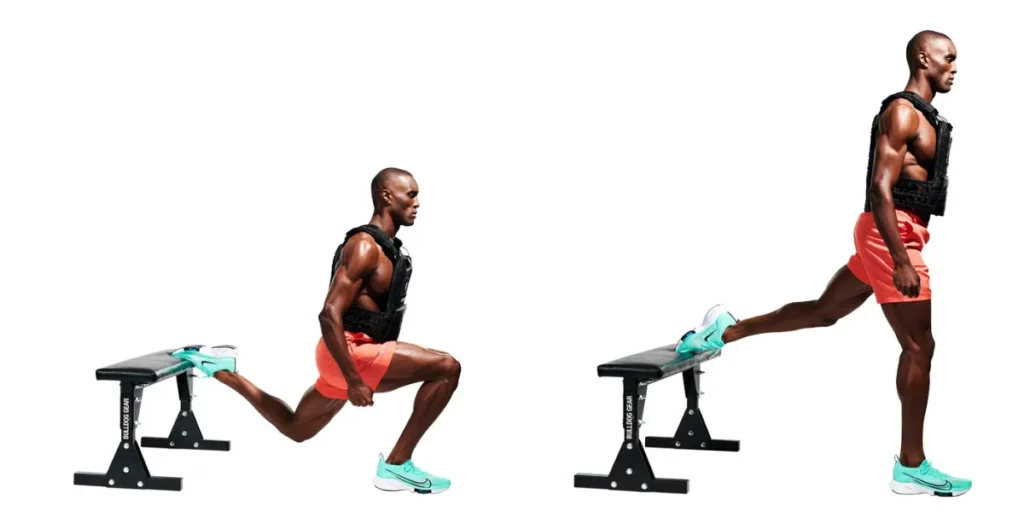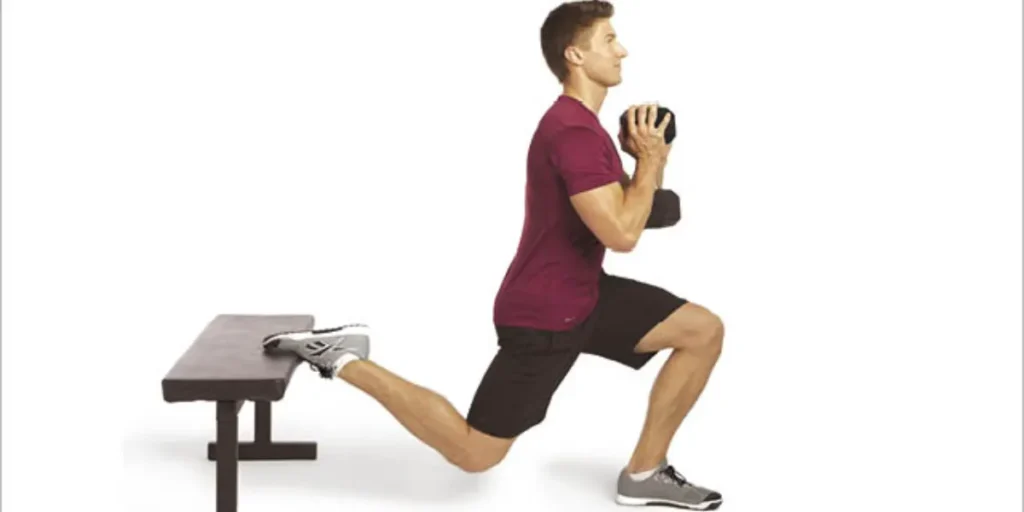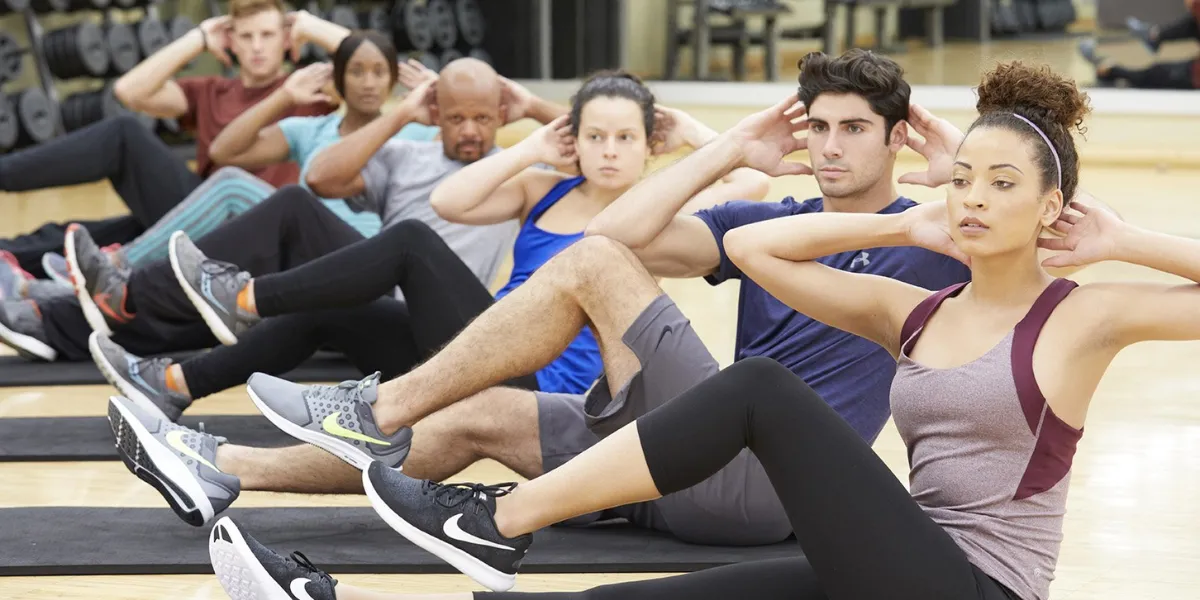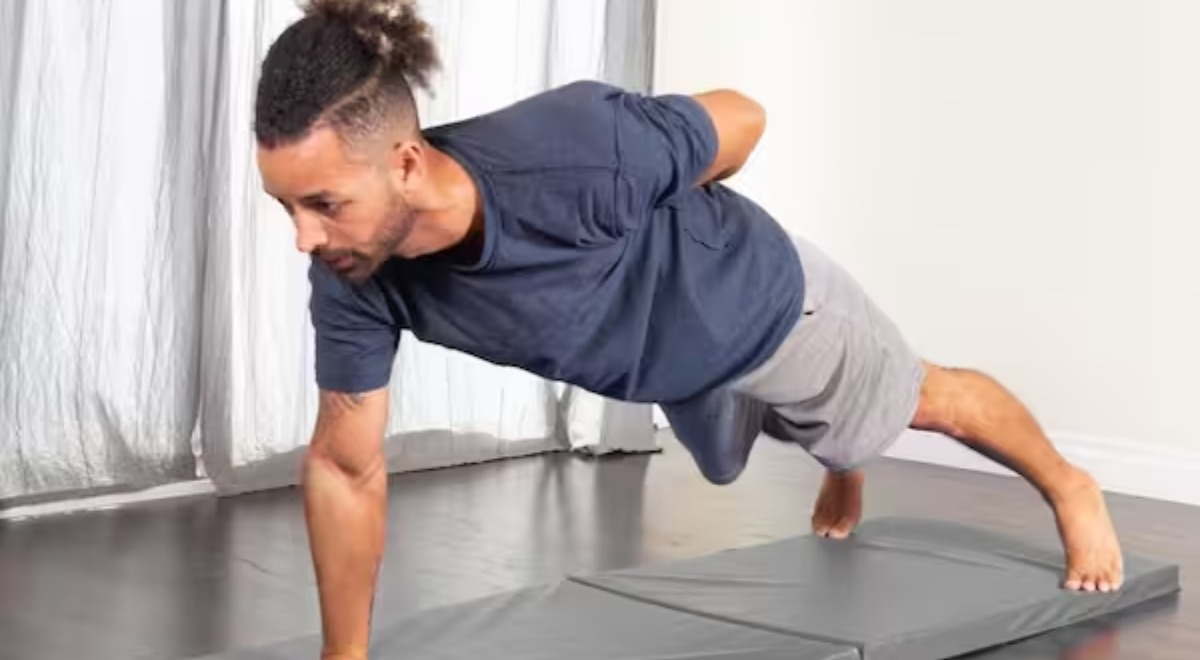The split squat, a unilateral exercise, is a powerhouse for building lower body strength, and stability and improving balance. It’s a versatile move that can be done with body weight, dumbbells, barbells, or even weighted bags.
This guide dives deep into split squats, exploring their benefits, proper technique, and variations, and addressing frequently asked questions.
Benefits of Split Squats:
- Strengthens major muscle groups: Targets quads, glutes, hamstrings, and core, promoting overall lower body development.
- Improves balance and stability: Works each leg independently, enhancing coordination and stability.
- Functional movement: Mimics everyday activities like lunging and stair climbing, increasing functional fitness.
- Reduced risk of injury: Strengthens stabilizer muscles around the hips and knees, potentially preventing injuries.
- Scalable for all fitness levels: Can be modified with body weight, weights, or different leg positions to suit your needs.
Table of Contents
ToggleMastering the Technique:
Here’s how to perform a basic bodyweight split squat:
- Start in a lunge position: Step forward with one leg, keeping your front foot flat and your back heel slightly off the ground.
- Maintain an upright torso: Engage your core and keep your back straight, as if pressing your shoulder blades down and together.
- Lower down: Bend both knees until your front thigh is parallel to the ground and your back knee nearly touches the floor.
- Push through your front heel: Press back up to the starting position, focusing on using your glutes and quads to drive the movement.
- Repeat: Complete the desired repetitions on one leg before switching to the other side.
Tips for proper form:
- Keep your front knee aligned over your ankle throughout the movement.
- Avoid letting your torso lean forward excessively.
- Maintain a slight arch in your lower back.
- Breathe out as you push up from the squat.
Split Squat Variations:
Spice up your workout with these variations:
- Dumbbell Split Squats: Hold dumbbells in each hand for added challenge.
- Bulgarian Split Squats: Elevate your back leg on a bench for increased hamstring activation.
- Weighted Vest Split Squats: Add a weighted vest for an extra push.
- Reverse Split Squats: Step backward with one leg instead of forward.
- Jump Split Squats: Add an explosive jump at the top of the movement for a plyometric challenge.
Split Squats Explained: Benefits, Differences, and Challenges
Split squats are a fantastic exercise for strengthening your lower body and improving overall fitness. Here’s a breakdown of their key points, addressing your specific questions:
What do split squats do?
Split squats target multiple muscle groups, including:
- Quads: Provide the driving force for the movement.
- Glutes: Engaged to stabilize your hips and extend your leg.
- Hamstrings: Flexed in the back leg for stability and balance.
- Core: Engaged to maintain a strong torso throughout the movement.
Benefits of split squats:
- Strengthens lower body: Works major muscle groups, leading to improved leg power and stability.
- Improves balance and coordination: Challenges each leg independently, enhancing overall stability.
- Functional movement: Mimics everyday activities like walking, lunging, and stair climbing.
- Reduced injury risk: Strengthens stabilizer muscles around the knees and hips, potentially preventing injuries.
- Scalable for all fitness levels: This can be done with body weight, weights, or different leg positions.
Split Squats vs. Lunges:
Both exercises are similar, but with subtle differences:
- Stance: In a split squat, your back leg is elevated, placing more emphasis on the front leg. Lunges can be performed with both feet on the ground.
- Range of motion: Split squats often have a deeper lunge due to the elevated back leg.
- Challenge: Split squats can be slightly more challenging due to the increased balance requirement.
Are split squats better than regular squats?
Both exercises offer unique benefits:
- Split squats: Focus on unilateral strength, stability, and balance.
- Regular squats: Build overall lower body power and strength.
Consider incorporating both exercises into your routine for a well-rounded workout.
Why are split squats so difficult?
Split squats challenge your balance and stability more than regular squats due to the single-leg stance. They also require good core engagement to maintain proper form.
Tips to improve your split squats:
- Start with bodyweight: Master the bodyweight movement before adding weights.
- Focus on form: Maintain proper posture and knee alignment.
- Challenge yourself gradually: Increase weight, reps, or sets as you get stronger.
- Incorporate variations: Try different split squat variations to target different muscles or add difficulty.
With practice and proper technique, you can master split squats and reap their numerous benefits.

FAQs about Split Squats:
1. How many sets and reps should I do?
Aim for 2-3 sets of 8-12 repetitions per leg. Adjust the weight or difficulty based on your fitness level.
2. Can I do split squats if I have knee pain?
Consult a doctor or physical therapist before starting any new exercise program, especially if you have any pre-existing injuries.
3. What are some common mistakes to avoid?
Letting your knees cave inward, arching your back excessively, and not lowering yourself down far enough are common mistakes.
4. How can I progress my split squats?
Increase the weight, reps, and sets, or try more challenging variations like jump split squats.
5. Are split squats better than regular squats?
Both exercises offer benefits. Split squats focus on unilateral strength and stability, while regular squats can build overall lower body power. Consider incorporating both into your routine.
6. Can I do split squats without weights?
Absolutely! Bodyweight split squats are a great way to start and build a strong foundation.
7. How often should I do split squats?
You can incorporate split squats into your lower body workout routine 2-3 times per week.
8. Is it okay to feel sore after doing split squats?
Mild muscle soreness is normal after exercise. However, if you experience sharp pain, stop and consult a healthcare professional.
9. What are some good warm-up exercises before doing split squats?
Light cardio, lunges, and dynamic stretches can help prepare your muscles for the exercise.
10. Can I do split squats at home?
Yes! All you need is some space to move around. Bodyweight split squats require no equipment, making them a convenient exercise option.
Conclusion:
Split squats are a valuable addition to any fitness routine. They offer a multitude of benefits, from building strength and stability to improving balance and coordination. With proper technique and variations, you can challenge yourself and achieve your fitness goals. So, incorporate split squats into your workout and experience the difference!














